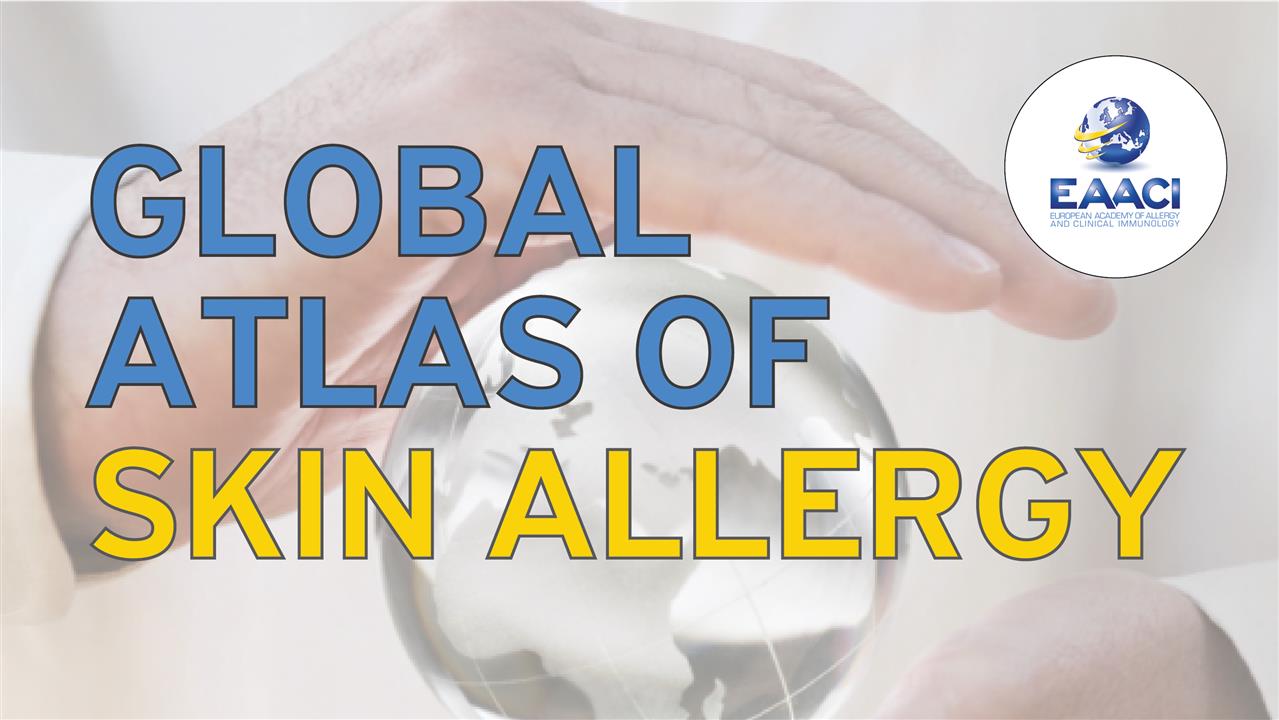Global Atlas of Skin Allergy
Global Atlas of Skin Allergy
Allergic diseases are very common in the dermatological practice. Skin conditions are one of the most common forms of allergy managed by an allergist making them a major global public health problem. Atopic eczema and urticaria each affect about one in five persons. In five to ten percent of our population, a penicillin allergy is suspected, mostly because of a previous skin rash. Contact dermatitis a leading cause of occupational disease. Urticaria may be the first sign of life-threat-ening anaphylaxis. Red, bumpy, and itchy skin is irritating, embarrassing and disturbing the sleep due to itch. It leads to a severe reduction of quality of life in affected patients. Our community faces huge direct and indirect costs due to allergic skin diseases by direct health care costs, but also by loss of productivity and absenteeism of patients. Despite increased understanding of the mechanisms leading to skin allergy already have produced advances in treatment options, such as the development of biopharmaceuticals, still a high number of unmet needs remain to be resolved. To tackle this huge global health problem, the EAACI decided to follow up their highly successful series of allergy atlases with the development of a “Global Atlas of Skin Allergy”. With this atlas, EAACI and the editors aim to increase awareness on the global burden created by skin allergies, to provide information on the mechanisms, clinical picture and management of allergic skin diseases, and to reinforce the need for research and interaction in this area and the role of a structured man-agement strategy including education and prevention. It may help to provide information on which structures, existing programs and tools are already in place and guidance on how to overcome remaining barriers in order to progress to novel innovative solutions for the global management. The “Global Atlas of Skin Allergy” contains 113 chapters written by 118 authors with 92 clinical pictures, 105 illustrations and 70 tables. It covers the basics of skin immunology and mechanisms in the skin, epidemiology, nomenclature, histopathology, skin allergy tests as key elements for aller-gy diagnosis, the clinical pictures of cutaneous allergic reactions and differential diagnoses, guid-ance on recognition and management, a comprehensive global assessment of burden as well as strategies for the management allergic skin diseases. It covers common diseases, such as urticaria, angioedema, atopic dermatitis, contact dermatitis, cutaneous drug allerg and mastocytosis. The atlas may serve as an educational tool and desktop reference for medical students, allied health care workers, primary care physicians, pharmacists, medical industry, policy makers, patient organ-isations and specialists dealing with allergic skin diseases. We would like to thank all of the authors for their contributions as well as Ioana Agache, Cezmi Akdis and Ana Antunes for their continuous support.
